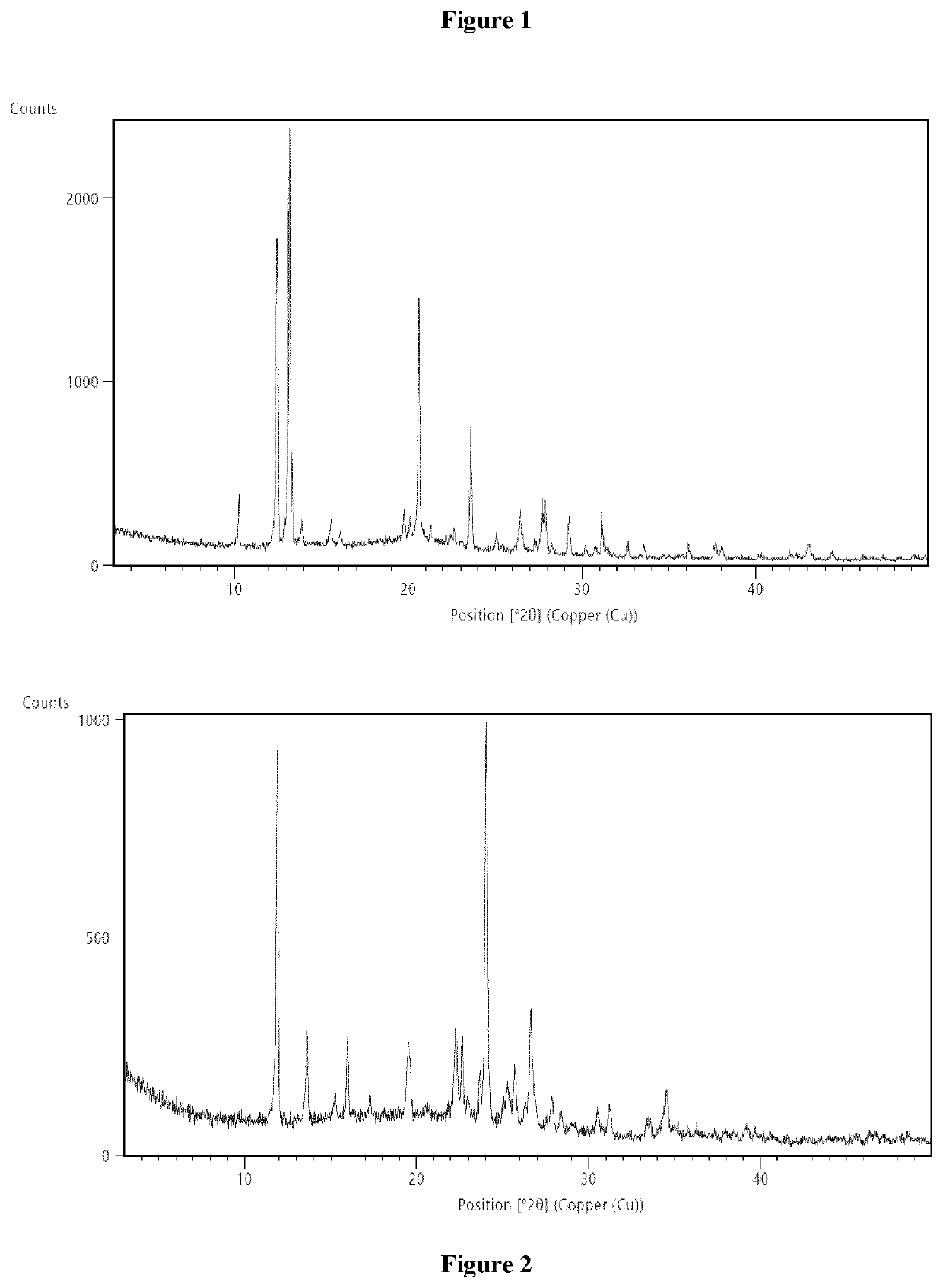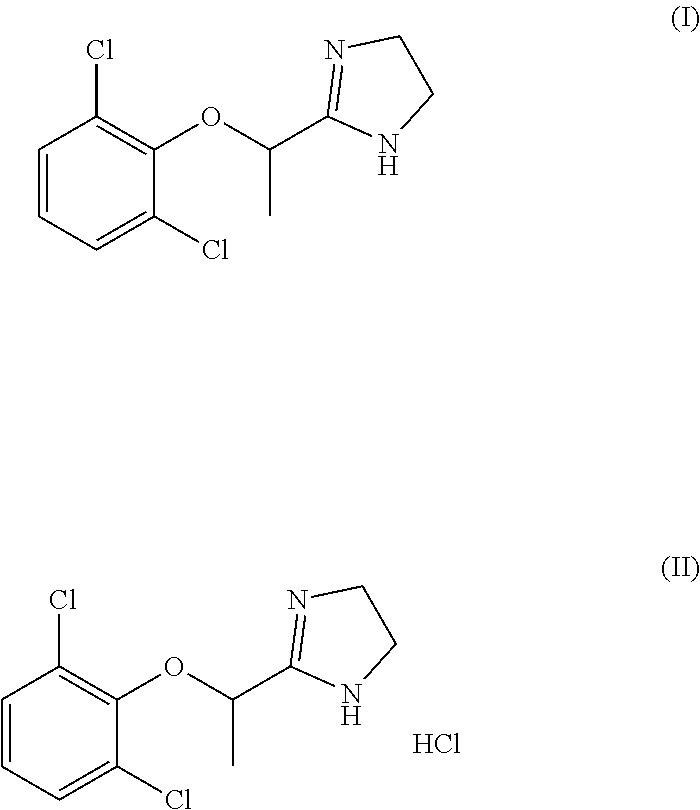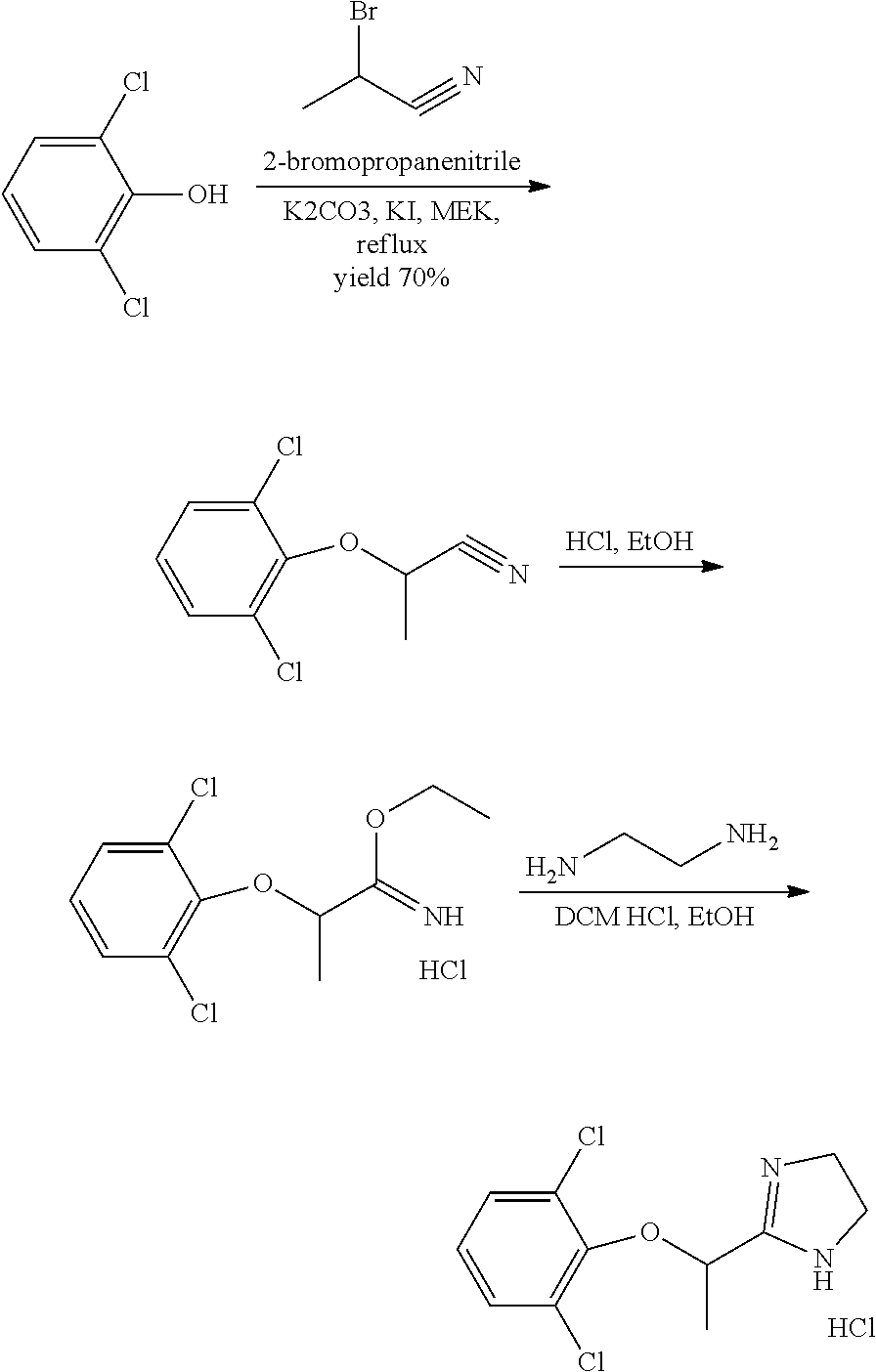Process for the synthesis of lofexidine
a synthesis process and lofexidine technology, applied in the field of antihypertensive drugs, can solve the problems of inefficient and cost-effective synthesis methods, difficult to obtain reagents, and difficult process application on an industrial scal
- Summary
- Abstract
- Description
- Claims
- Application Information
AI Technical Summary
Benefits of technology
Problems solved by technology
Method used
Image
Examples
example 1
[0053]Powdered K2CO3 (59.3 g, 0.429 moles) and MIBK (150 ml, 3 volumes) are loaded at room temperature into a 100 mL reactor rendered inert with N2. A solution of 2,6-dichlorophenol (50 g, 0.307 moles) in MIBK (150 ml, 3 volumes) is added to the suspension. The suspension is stirred at room temperature for 10-15 minutes, and ethyl 2-chloropropionate (58.5 g, 54.6 ml, 0.429 moles) is then added slowly. The suspension is heated under reflux temperature (116° C.) for 5 h. The reaction is complete after 5 h: >99% conversion to ethyl 2-(2,6-dichlorophenoxy)propionate. The suspension is left to stand at room temperature, and the salts are dissolved by adding H2O (150 ml, 3 volumes). The phases are separated and the aqueous phase is washed with MIBK (150 ml, 3 volumes). The combined organic phases are washed with a 5% solution of aqueous NaOH (100 ml, 2 volumes), then with H2O (200 ml, 4 volumes) and finally concentrated to an oily residue by complete evaporation of the solvent. Yield >90%...
example 2
[0054]Powdered K2CO3 (59.3 g, 0.429 moles) and MIBK (150 ml, 3 volumes) are loaded at room temperature into a 100 mL reactor rendered inert with N2. A solution of 2,6-dichlorophenol (50 g, 0.307 moles) in MIBK (150 ml, 3 volumes) is added to the suspension. The suspension is stirred at room temperature for 10-15 minutes, and ethyl 2-chloropropionate (58.5 g, 54.6 ml, 0.429 moles) is then added slowly. The suspension is heated at the temperature of 60° C. for 36 h. The reaction is complete after 36 h: >99% conversion to ethyl 2-(2,6-dichlorophenoxy) propionate. The suspension is left to stand at room temperature, and the salts are dissolved by adding H2O (150 ml, 3 volumes). The phases are separated and the aqueous phase is washed with MIBK (150 ml, 3 volumes). The combined organic phases are washed with a 5% solution of aqueous NaOH (100 ml, 2 volumes), then with H2O (200 ml, 4 volumes) and finally concentrated to an oily residue by complete evaporation of the solvent. Yield >90%. P...
example 3
[0055]Powdered K2CO3 (59.3 g, 0.429 moles) and MIBK (150 ml, 3 volumes) are loaded at room temperature into a 100 mL reactor rendered inert with N2. A solution of 2,6-dichlorophenol (50 g, 0.307 moles) in MIBK (150 ml, 3 volumes) is added to the suspension. The suspension is stirred at room temperature for 10-15 minutes, and ethyl 2-chloropropionate (58.5 g, 54.6 ml, 0.429 moles) is then added slowly. The suspension is heated at the temperature of 80° C. for 24 h. The reaction is complete after 24 h: >99% conversion to ethyl 2-(2,6-dichlorophenoxy) propionate. The suspension is left to stand at room temperature, and the salts are dissolved by adding H2O (150 ml, 3 volumes). The phases are separated and the aqueous phase is washed with MIBK (150 ml, 3 volumes). The combined organic phases are washed with a 5% solution of aqueous NaOH (100 ml, 2 volumes), then with H2O (200 ml, 4 volumes), and finally concentrated to an oily residue by complete evaporation of the solvent. Yield >90%. ...
PUM
| Property | Measurement | Unit |
|---|---|---|
| temperature | aaaaa | aaaaa |
| temperature | aaaaa | aaaaa |
| temperature | aaaaa | aaaaa |
Abstract
Description
Claims
Application Information
 Login to View More
Login to View More - Generate Ideas
- Intellectual Property
- Life Sciences
- Materials
- Tech Scout
- Unparalleled Data Quality
- Higher Quality Content
- 60% Fewer Hallucinations
Browse by: Latest US Patents, China's latest patents, Technical Efficacy Thesaurus, Application Domain, Technology Topic, Popular Technical Reports.
© 2025 PatSnap. All rights reserved.Legal|Privacy policy|Modern Slavery Act Transparency Statement|Sitemap|About US| Contact US: help@patsnap.com



